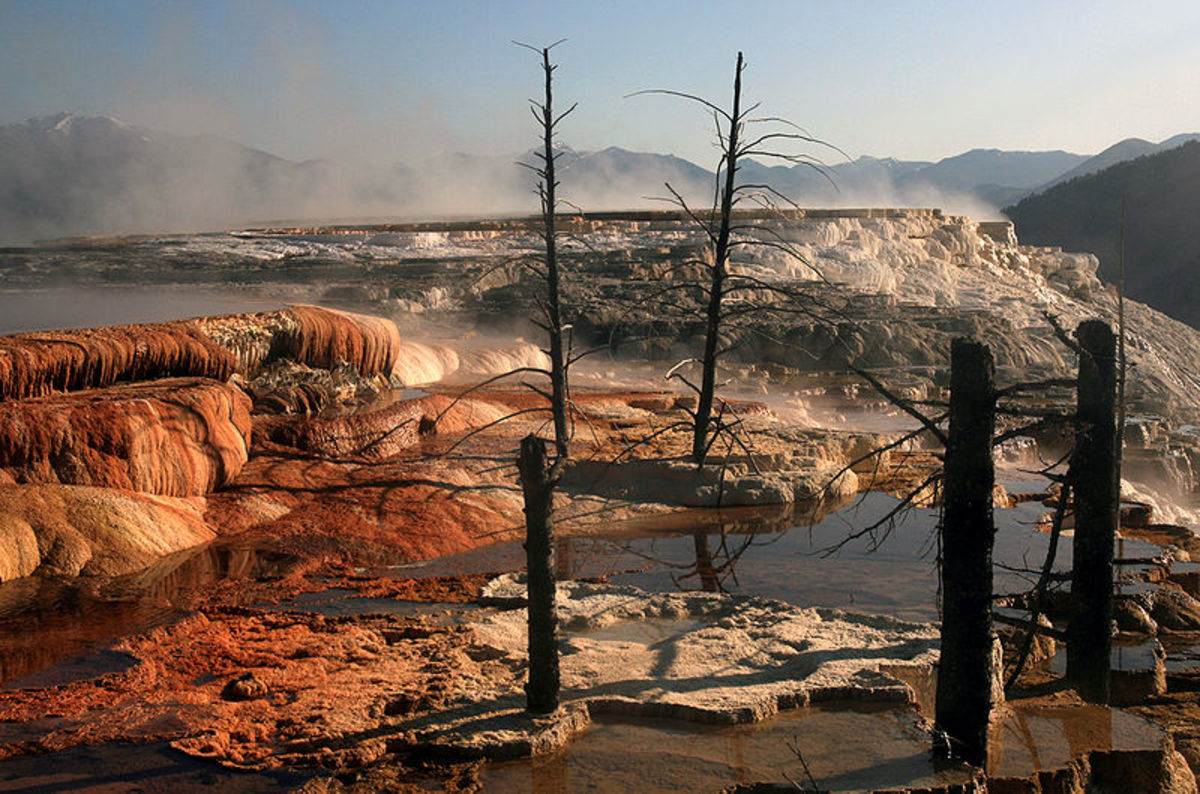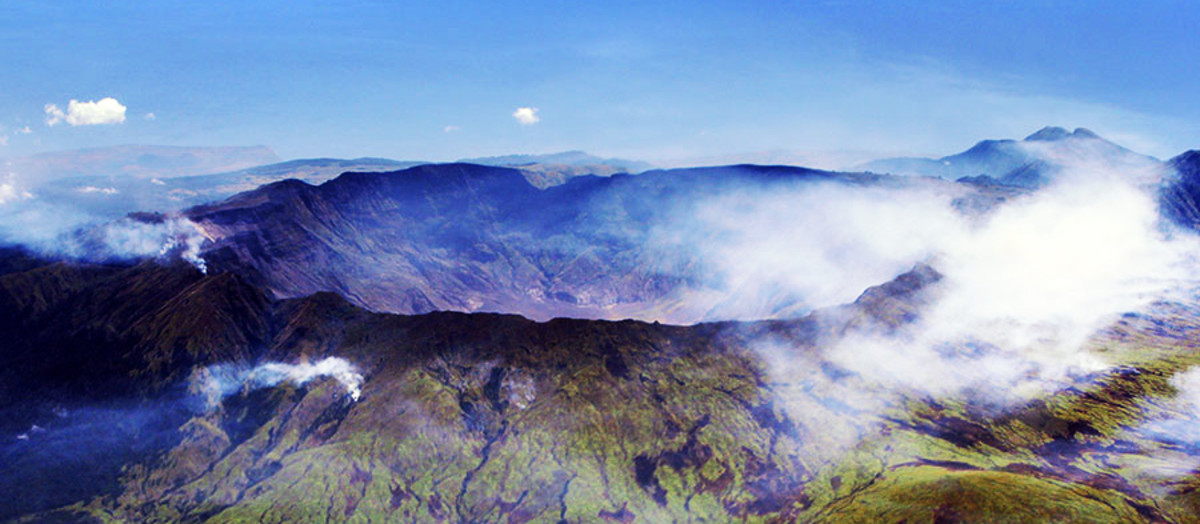Seven Reasons Why Los Angeles Should Prepare for The Big One.. Now



1. In 2002, a scientific study was published in the Bulletin of the Seismological Society of America. Led by T.R. Topposada, what they found was that destructive earthquakes in northern California were preceded by a larger frequency than usual of 5.5 or greater earthquakes. For example, the 1906 San Francisco earthquake was foreshadowed by 18 quakes in the same general area for the 26 years just before it occurred (followed by decades of relative calm).
Using a database supplied by the USGS' web site, I searched for earthquakes in a 175 kilometer radius surrounding the epicenter of the 1906 earthquake and came up with 20 quakes of 5.5 or greater. Doing a similar search for quakes in a 175 kilometer radius surrounding Los Angeles for the past 26 years, I also came up with 20 such quakes (both results are shown below).
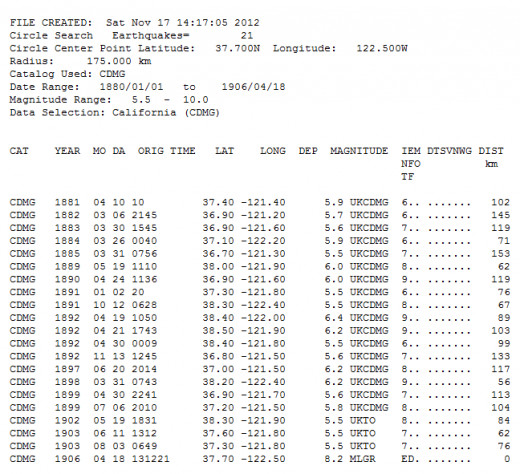
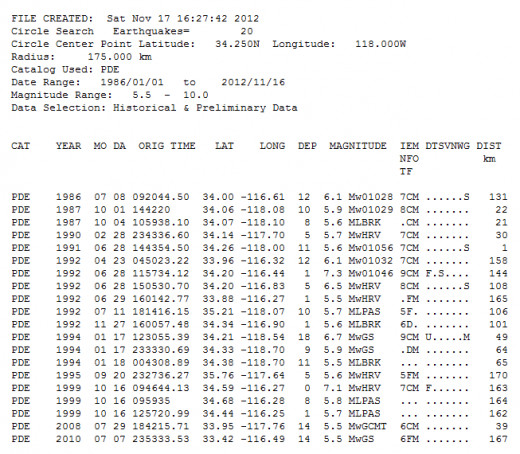
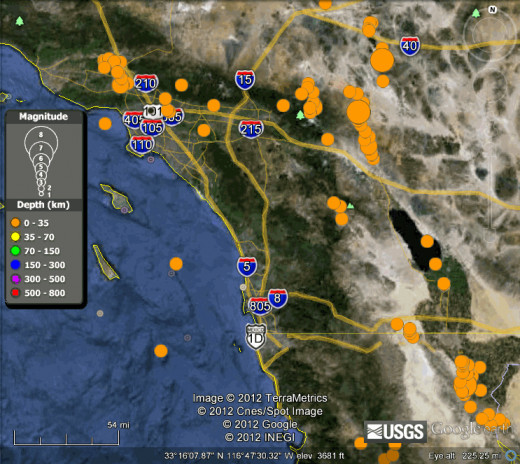
2. A scientific study headed by Sinan Akciz, was published in the September issue of Geology magazine in 2010, related to the most up to date estimates of how often residents of Los Angeles can expect super quakes to occur. Ten years ago seismologists would have said that there is probably a better chance that such a quake would occur 50 years from now than now. They've since discovered that we are past due rather than expecting it at some point later down the road. In other words it is more likely to happen now than 50 years from now.
3. Recently there was an earthquake swarm in Brawley, California (not far from the Mexican border). The largest of the quakes it produced was a 5.5 magnitude event (on 8/26/12). There were swarms in the same area preceding the destructive southern California quakes of 1933 and 1971 (per USGS seismologist Lucy Jones to City News Service).
4. Most earthquakes in the world border the pacific ocean in what is termed the Ring of Fire. Usually the lions share of such quakes occur in the western portion of this ring. Lately, it has been just the opposite, with many large events happening in Alaska, the west coast of Canada, Mexico, Central America, and the north portion of South America (see map at top of page). With the exception of a magnitude 5.3 event in King City, California, the west coast of the U.S. has been relatively quite. It would appear that this area represents a gap of inactivity on the eastern side of the Ring of Fire that may be the calm before a storm.
5. Before major quakes there are often smaller quakes that precede the main event, occurring at either end of where the fault will later rupture. Scientists are finding that this is not only true locally, but globally as well. In other words, the recent 5.3 magnitude quake in King City in the north and the 5.5 magnitude quake produced by the swarm in Brawly in the south, could be marking both ends of a fault rupture to a mega quake to come in the near future. Similarly, the large quakes along the Ring of Fire that recently occurred north and south of the west coast of the United States define a gap that could be a ticking time bomb with the count down perhaps nearing its end.
6. Earthquake scientists used to estimate that the Big One to come would be in the 7.5 to 7.9 range. They now feel that the upper range is more likely 8.1 magnitude (see the LA Times of 10/10/10). Since the scale is logarithmic, an 8.1 magnitude event would be twice as powerful as one of 7.9 magnitude.
7. An 8.1 magnitude quake would be caused by rupturing together of the two segments along the San Andreas fault that ruptured separately in 1812 and 1857. But there was another huge quake about 310 years ago that ruptured south of the San Gabriel mountains (in the Indio-Coachella Valley) that is also due to happen (even more likely than for either of or both of the two segments that ruptured in 1812 and 1857). It is quite possible that a rupture of the fault on a grand scale in either one of these locations could trigger an earthquake in the other location nearly simultaneously, producing perhaps the largest earthquake in California for over a thousand years (see "How One Major Southland Earthquake Could Become Two" by Gary London at examiner.com dated 8/5/12).

The only ray of temporary hope I see is that, although there always isn't going to be a preshock in the area of the future epicenter of a destructive earthquake, usually there will be one. There was a 5.4 magnitude quake that preceded the Loma Prieta earthquake of October 1989, 71 days before the main event. It would not surprise me if the Los Angeles area experiences a quake in at least the 5.3 to 6.2 magnitude range during the next month. If it does then it will definitely be the time to seriously prepare for a much more destructive earthquake to follow (if it isn't already).


© 2012 Joseph Ritrovato






